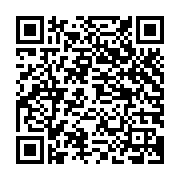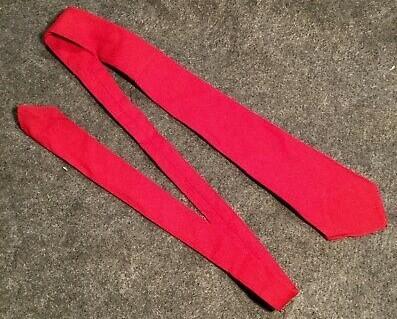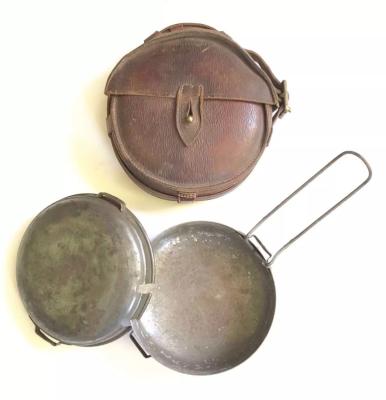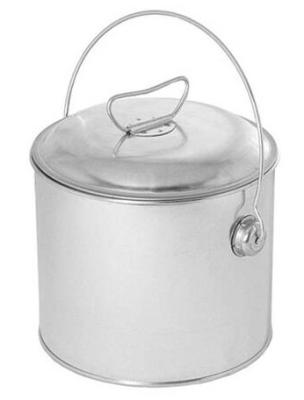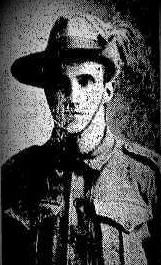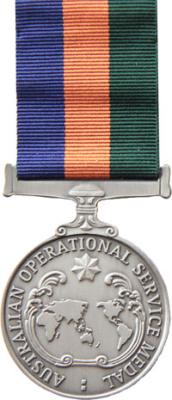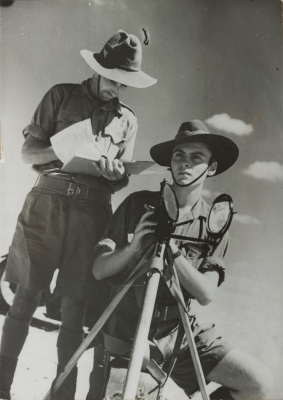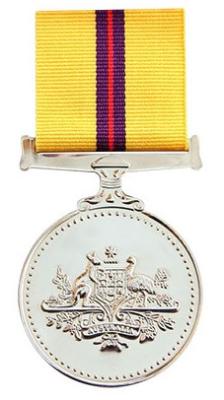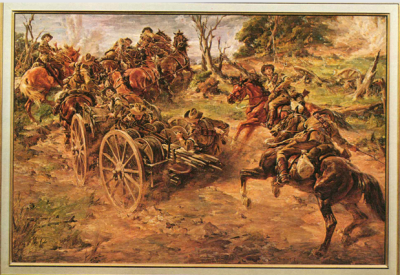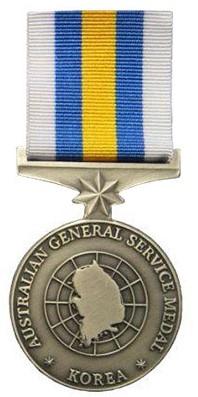World War 1, 1912 Universal Pattern Saddle Equipage - Fodder Bag
Cream canvas feed bag for a horse, designed to be attached to the saddle to carry feed and then to be placed on the horse's head as a nosebag so that it can eat. The bag has a rectangular shape and the bottom is reinforced by a second layer of canvas. Four large brass reinforced riveted holes have been placed horizontally across the front of the bag, approximately 95mm from the top edge of the bag, to provide the horse with ventilation while it is eating. A canvas strap is attached to the left side of the bag and threads through a canvas loop on the right side. It can be tied and adjusted to a suitable length.
Food for horses is called 'fodder'. A horse required ten times as much food as the average soldier. During World War 1, there was a distinct lack of grass for them eat on the Western Front or in the deserts of the Middle East. This meant that horse fodder was the largest commodity shipped to the front by many of the participating nations. Each horse needed the equivalent of a bale of hay per week.
The demands on transport meant that feed had to be rationed. Of all the warring nations, British horses ate the best. The naval blockade forced the Germans to supplement their horses' feed with sawdust, causing many to starve. The horses were fed from a nose bag rather than directly from the ground. This reduced waste and cut the risk of horses eating something that would make them ill. It also stopped a horse stealing another's food.
Details
Details
A mounted mannequin in the World War 1 Gallery depicts a Light Horse Trooper with 1912 Pattern saddle and full equipage
Australian Army Museum of Western Australia
Australian Army Museum of Western Australia
Other items from Australian Army Museum of Western Australia
- World War 1, Red Necktie of Convalescent Blue Uniform
- World War 1, 1912 Universal Pattern Saddle Equipage - Circular Mess Tin or Dixie
- WORLD WAR 1 MESS TIN OR DIXIE - D SHAPED
- Anzac Christmas Billie 1915
- Governor General's Military Uniform
- World War 1, Australia, Western Australia, 250 CARLSON, 10 Light Horse
- Australian Operational Service Medal - Border Force
- Replica 7th War Loan Honour Flag
- Heliograph Mk5
- The Iraq Medal
- Royal Australian Corps of Signals Memorial Painting - "Signals in Action 1914 - 1918"
- Australian General Service Medal for Korea

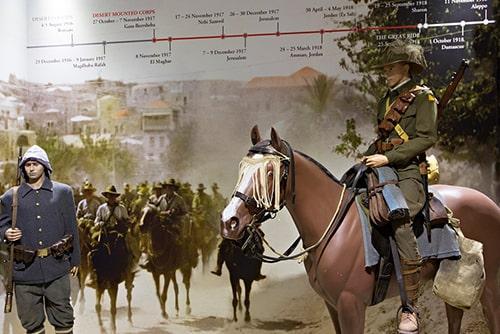

Scan this QR code to open this page on your phone ->
